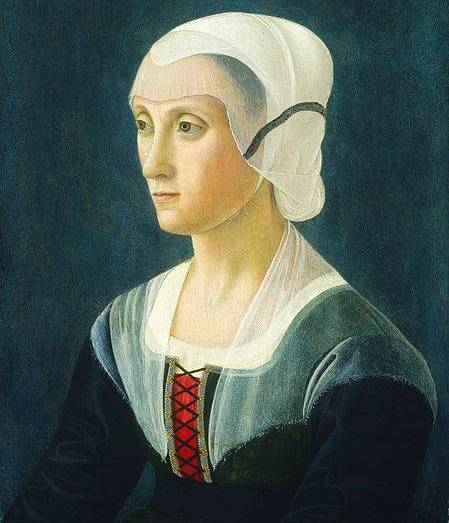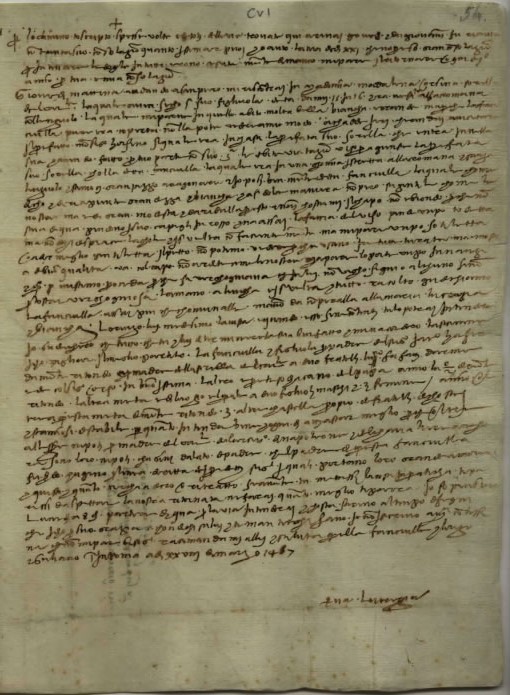Lucrezia Tornabuoni (1427-1482) was born into an elite Florentine banking family and married at age seventeen to Piero di Cosimo de’ Medici. She had five children; her eldest son went on to rule Florence and is known today as Lorenzo the Magnificent. Throughout her life Lucrezia was instrumental in helping both her husband and her son in political and business matters. A woman of letters, Tornabuoni was the author of a series of laudi (sacred poems) and five storie sacre, or sacred narratives, extensive poems based on the biblical stories of Judith, Esther, Susannah, John the Baptist, and Tobias. She was known throughout her life for her religious devotion and extensive charitable works.
Attributed to Domenico Ghirlandaio Lucrezia Tornabuoni c. 1475, National Gallery, Washington DC
Lucrezia Tornabuoni’s March 28, 1467 letter to Piero de’ Medici Archivio di Stato di Firenze MAP 106, 50
RESOURCES
Kent, Francis William. “Sainted Mother, Magnificent Son: Lucrezia Tornabuoni and Lorenzo de’ Medici,” in Italian History and Culture 3 (1997): 3–34.
Maguire, Yvonne. The Women of the Medici, London: Routledge, 1927, pp.60-126.
Milligan, Gerry. “Unlikely Heroines in Lucrezia Tornabuoni’s Judith and Esther,” in ITALICA Volume 88 Number 4 (2011), pp.538-564.
Pernis, Maria Grazia and Laurie Schneider Adams. Lucrezia Tornabuoni de’ Medici and The Medici Family in the Fifteenth Century, New York: Peter Lang, 2006.
Ross, Janet. Lives of the early Medici as told in their correspondence, London: Chatto & Windus, 1910, pp. 108-110.
Solum, Stephanie. Women, Patronage, and Salvation in Renaissance Florence: Lucrezia Tornabuoni and the Chapel of the Medici Palace, Ashgate, 2015.
Tomas, Natalie. The Medici Women: Gender and Power in Renaissance Florence, Ashgate, 2003
Tornabuoni de’ Medici, Lucrezia. Sacred narratives, Jane Tylus, ed. and trans. Chicago: University of Chicago Press, 2001.


